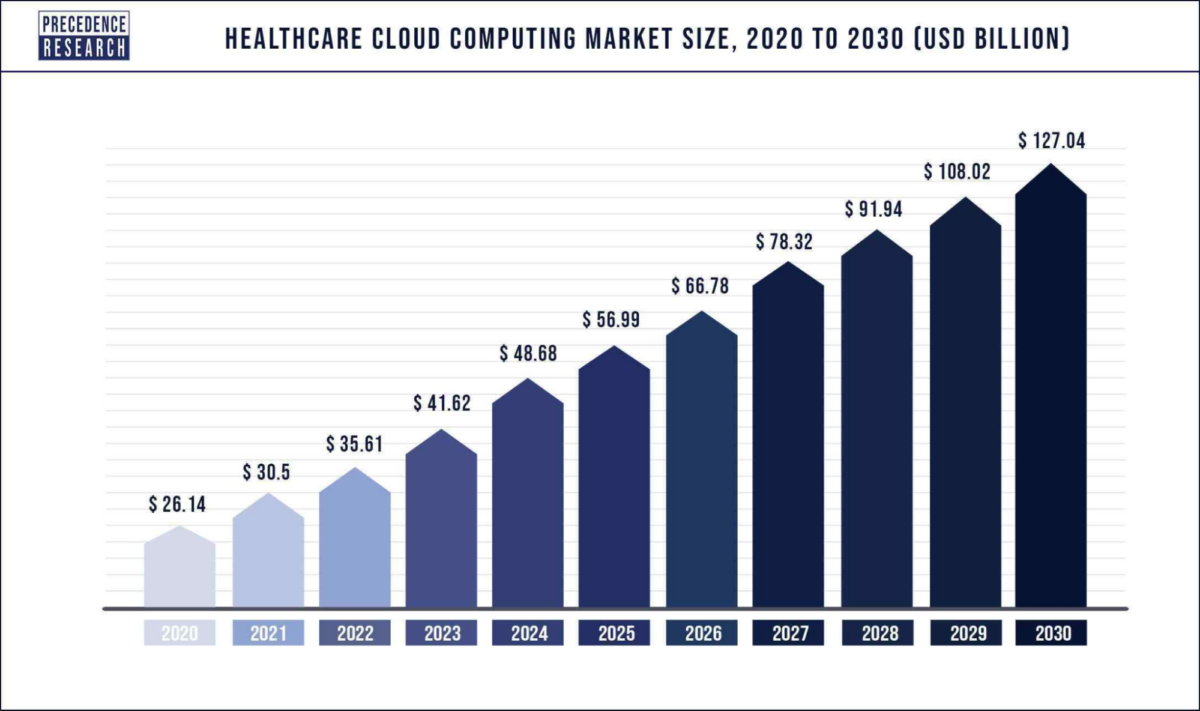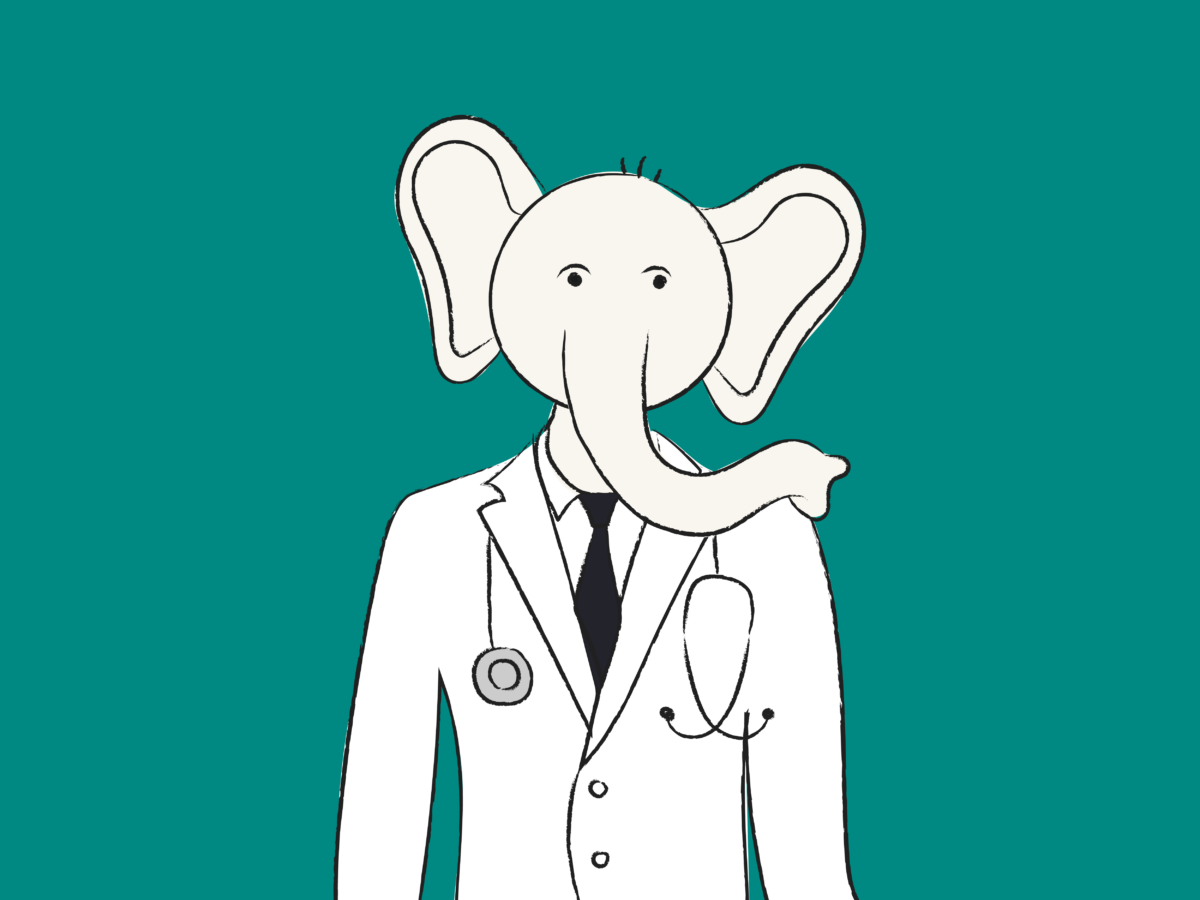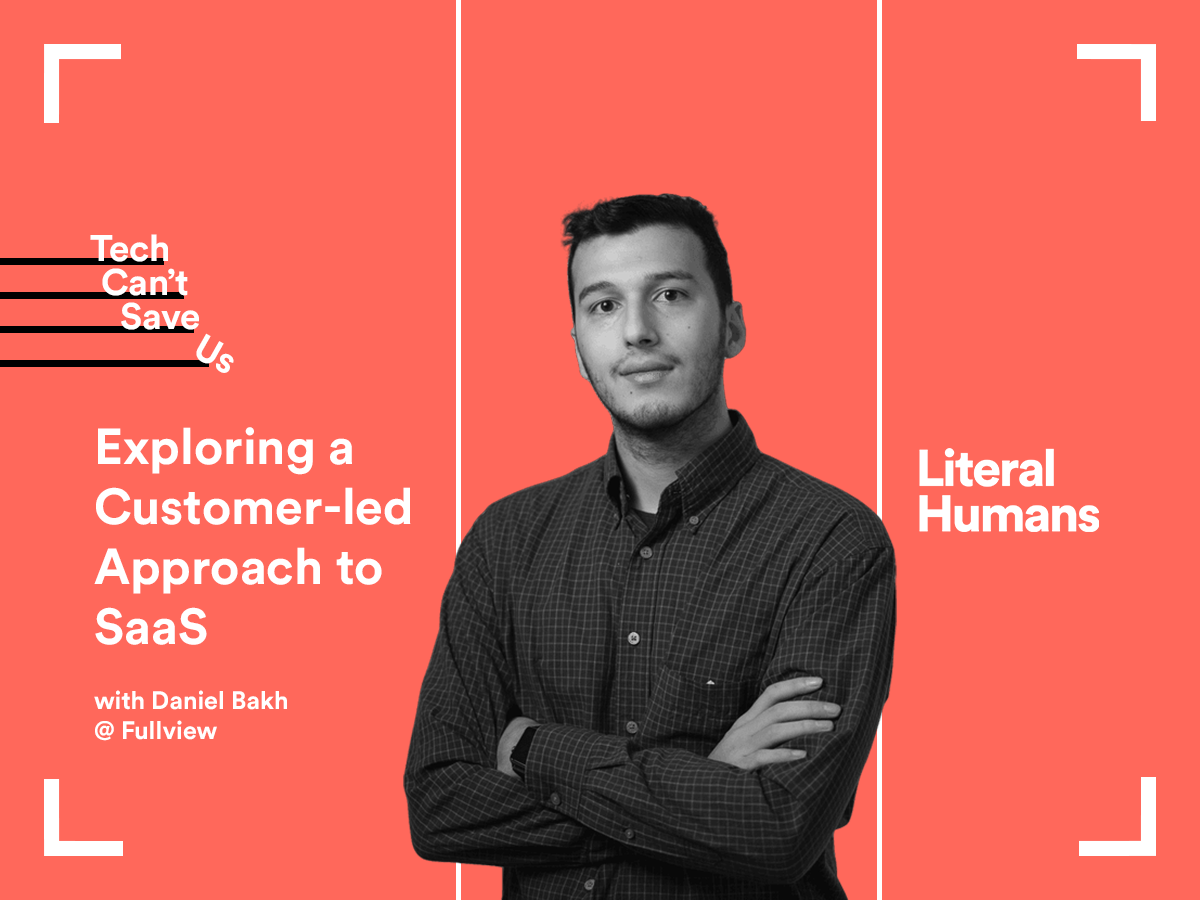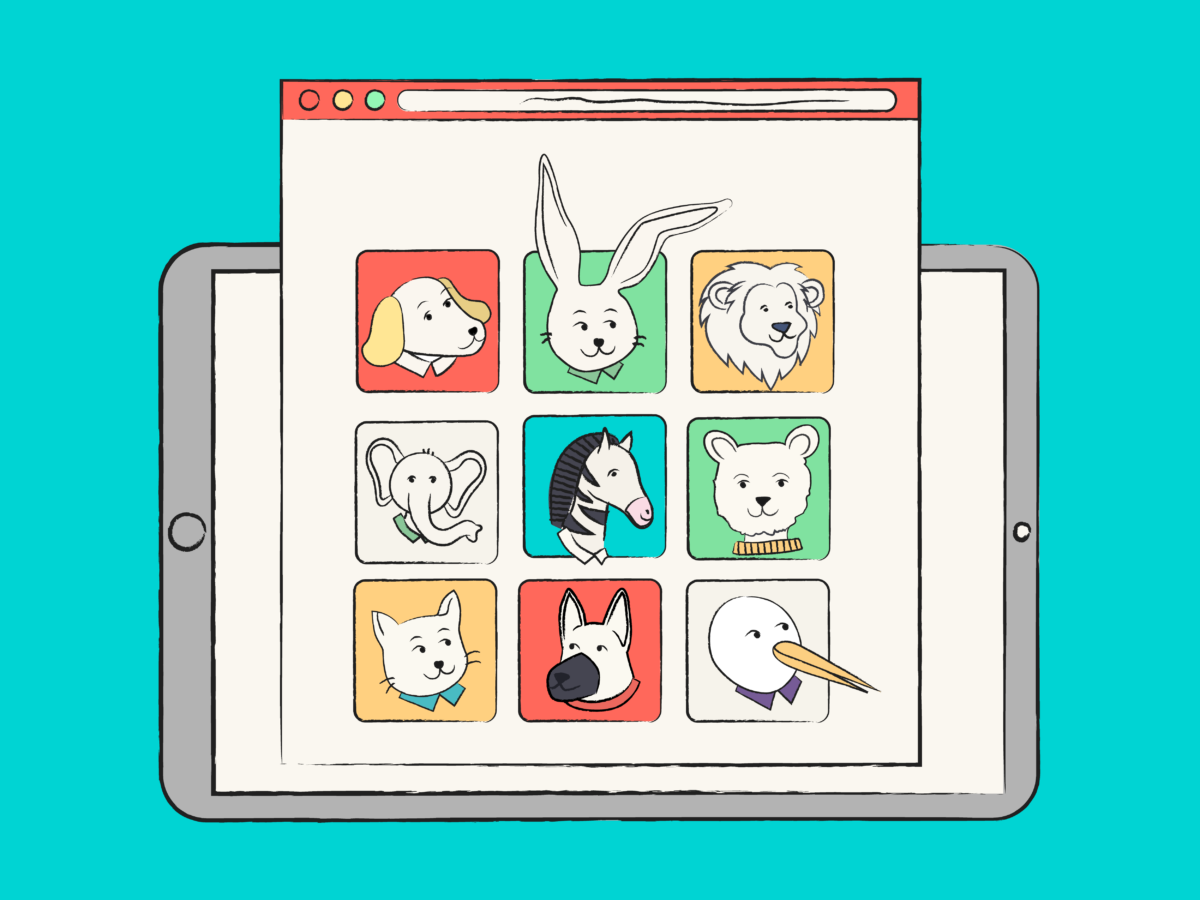There are over 8 billion people in the world. At some point, every single person will feel unwell, get sick, or injure themselves in some capacity. Unfortunately, global healthcare organizations simply aren’t equipped enough to deal with so many people at once, especially in situations like the covid-19 pandemic. And in other situations, private healthcare is often too expensive for people to afford, even with insurance.
This is where healthcare software-as-a-service (SaaS) can level the playing field and make access to medical professionals, advice, and treatment far easier to obtain. Everyone should have the right to be healthy, and technology can help facilitate that.
But there are reservations about replacing certain aspects of healthcare operations with automation and robotics. It has the potential to brand companies as uncaring, sterile, and distanced from the patients they vow to protect.
So it’s important to strike a balance between the two and ensure that your user interface (UI) reflects the positive user experience (UE) to come.
Without further ado, let’s dive into the ingenious world of healthcare SaaS, take a look at what it is, and which companies and technologies are at the forefront of improving the medical experience for everyone.
What is healthcare SaaS?
Software-as-a-service refers to any cloud-based subscription package that can be connected to over the internet (although some providers are finding ways to move services offline when necessary).
Common examples include the packages offered by Microsoft, Dropbox, the Google Drive and related functionalities, and Salesforce. The aim is to provide a cost-effective means of hosting data which improves accessibility and scalability for the user. In this instance, healthcare providers can make use of cloud services to collect large amounts of patient data, optimize the workflow of staff members across entire organizations, and improve patient care delivery as a result.
When the idea of using SaaS for healthcare services was first proposed, there was a lot of hesitancy and consideration due to the apparent security issues associated with cloud computing. Patient data security was a top priority, but the nature of early SaaS apps left them vulnerable to hacking, ransomware, and third-party supply chain attacks.
However, software developments and a more targeted approach to cybersecurity have helped to alleviate these concerns. Currently, the adoption rate of SaaS applications in healthcare is growing at around 20% every year. The industry is predicted to have a market worth between $70 – $100 billion USD by 2030.

Innovative healthcare SaaS solutions
The healthcare industry is enormous, meaning that the market opportunity for SaaS companies is equally as large. When faced with such a broad field, medical professionals are always looking for ways to ease and speed up the process of triaging, diagnosing, treating, and following up with patients.
In order to make an impact in an oversaturated market, it’s essential that your SaaS branding is as memorable and forward-thinking as possible. The statement should be made right from the get-go that your patients and their needs come first, as opposed to money-making schemes so often used by big pharma.
So, let’s take a look at the technology, the branding, and the solutions healthcare SaaS companies are using to help revolutionize the efficiency of the healthcare sector and where all this could go from here.
Utilizing AI to improve patient management
Staffing issues are a prevalent and serious problem in the medical industry. It means that more stress is placed on the healthcare professionals currently working, leaving them burnt out and unable to provide adequate care to all the patients who need it.
This is where AI (artificial intelligence) can be an absolute life-saver.
There are many administrative jobs within the field of healthcare which benefit from automation, allowing doctors and nurses to spend more time with patients, providing the best level of care possible. Here are three useful SaaS use cases, with excellent branding examples to boot.
- Triage
Hospitals see a staggering amount of patients every day, some of whom are there for much less severe reasons than others.
Natural language processing (NLP) and sentiment analysis can scan a patient’s written concerns to identify key information and help prioritize those waiting for treatment. AI can sort through the symptoms and complaints of each person and triage them accordingly, making sure the people most in need of attention get seen as quickly as possible.
One awesome SaaS brand doing just that is Mednition with their AI system, KATE. Their motto?
“KATE cares for nurses, so nurses can care for patients”

Their message is perfectly to the point and leaves no doubt in their customers’ minds what they’re there to achieve. And, with over a million patients helped by this triage software each year, it’s clear to see that it’s working as promised.
- Chatbots for follow-ups
Patient monitoring is an essential part of the healthcare process. Doctors need to be able to follow up with patients after they have been discharged, and AI chatbots can help facilitate this without taking them away from more urgent, in-person duties.
In cases such as these, it’s vital that the UI is as friendly and accessible as possible to make the patient feel valued, regardless of whether they’re talking to a doctor or a machine. It’s also important that everything is simple to navigate to alleviate any potential confusion or stress.
Easy, quick questionnaires and surveys work best using pain scales and single-word or phrase responses. These can then easily be analyzed by language-learning AI and NLP, identifying any potential areas which need to be addressed with a proper visit.
However, it’s also necessary that these SaaS apps have a space to get into contact with a doctor quickly or report anything that’s unexpected or wrong. These should be clearly signposted for the best UE possible.
- Chatbots for mental health
NLP can also be used in therapeutic settings to help patients who may be suffering with their mental health. A 24/7 service allows users to talk to an AI therapist whenever they need to, seeking advice from industry experts and specialists who have helped to design the best possible self-help apps.

Companies like Youper provide excellent advice, exercises, and personalized insight into why a patient feels the way they do and teaches them how to help mitigate their negative emotions.
The app is intuitively designed, featuring not only a smart and easy-to-navigate homepage but also more subliminal branding choices, such as their use of color. Warm-tone orange and purple gradients provide a feeling of comfort and security right from the get-go. And the use of soft lines and curves rather than hard corners on text boxes and exercise commands adds to this mental safety blanket, welcoming the user in.
Outside of the app, Youper’s social media presence helps to reinforce this idea of great UE and promotes a sense of calm mindfulness. Their Instagram is full of inspirational quotes, all designed to connect a user to their cause and build on a sense of reliability and self-improvement.

Other AI systems can also monitor sleep patterns, heart rate, and activity levels to detect signs of depression or anxiety.
- AI for diagnosis
As tough as it is to admit, doctors can easily get things wrong. The body is still largely unknown in its entirety, with many organs, such as the brain, producing wild and unorthodox issues with very little warning.
AI can be there as an assistant to humans, helping to diagnose problematic issues. For example, BrainSightAI is an Indian SaaS company which makes use of machine learning and AI to research neurological issues such as dementia, epilepsy, personality disorders, and brain tumors.
Their product, VoxelBox Explore, “uses AI based connectomics to generate personalized brain maps,” which allows doctors and surgeons to better understand how each individual patient’s brain works. This helps them to make more informed decisions in terms of treatments.
Because this product is targeted towards healthcare professionals rather than patients, their branding has more of an emphasis on academic reliability and effectiveness. However, they include a disclaimer that VoxelBox is only to be used in research, not as a medical device.
EHR/EMR data-handling
Handling large amounts of patient data can be a nightmare. Fortunately, we’ve moved on from the old methods of filing everything physically on sheets of paper and stuffing them in drawers. Now, any hand-written notes can be scanned in and uploaded to a cloud location for all staff members to access remotely.
Electronic health records (EHRs) and electronic medical records (EMRs) take up a lot of data-space, though. Some providers estimate that an individual patient can generate nearly 80 megabytes of imaging and EMR data per year. This is too much for a single person to sort through.
Once again, AI can be leveraged to find relevant information, identify patterns, and create data analytics for doctors to study. Offering a SaaS with AI integration will make a product far more attractive for medical professionals, as it means they’ll be able to access health information with very little stress.
This is where the correct UI is vital. Developers need to focus on how they can make these apps as user-friendly as possible, organizing everything with clear labels and quick navigation. NextGen Office is a very highly rated source of EHR management, with a branding that promises not only the empowerment of healthcare professionals but also their patients.
In that same vein, another benefit of keeping your files digitally is that patients can also access them via online portals. Sometimes you’ve got to provide information on when you had certain vaccinations – if you forgot to write it down at the time, this could be a nightmare. So having all your information in one convenient online place will save a whole lot of hassle.

Home monitoring and treatment
When patients have been given a lot of information by a doctor, it can be difficult to remember or follow up correctly without written guidance. SaaS businesses can revolutionize telemedicine, allowing doctors to get in contact with patients in remote locations or those with very limited mobility as long as they have internet access. This means they can provide excellent quality advice and care without having to travel long distances.
On-Demand Homecare is one such service provider located in Dallas, Texas. They provide accessible services for healthcare businesses and agencies looking to improve their homecare solutions. Their platform includes:
- Billing management and integrated claims processing
- Appointment and staff scheduling
- Electronic visit verification (EVV) to provide proof of service and reduce risk of fraud
- Real-time data syncing
- A user-friendly interface for the best experience possible
Scalability for healthcare providers
Since 1900, the population of planet Earth has exploded from 1.65 billion to over 8 billion people. Whilst the rate of growth appears to be slowing, reports by the UN estimate that the global population will peak at 10.4 billion in 2050. So, within that time, any current healthcare practices need to be expanded upon to cope with the increase in demand.

To make the most of your services, your SaaS product needs to be scalable and flexible so you can allow healthcare providers to adapt to changing needs and upgrade their operations with your tool as required. This could mean:
- Helping your client expand to multiple locations
- Having a simple UI which makes it easy to incorporate more staff and more patients
- Owning a wide range of products which allows your users to take on new roles and responsibilities
The specialized nature of the healthcare industry means that a vertical SaaS solution would be a better fit than a horizontal SaaS model. Vertical SaaS is more niche, designed specifically for one use-case rather than applicability across a broad range of services.
This allows for greater application of a software solution in its designated market, as providers don’t have to try and make the SaaS fit a system it wasn’t designed to be a part of, or vice versa, change their own practicing methods to work around the SaaS model.
For example, whilst the e-commerce industry is enormous, there are patterns of practice which are applicable across the board. Part of the branding found in these types of SaaS providers deals with ease of delivery, customer relations management (CRM), and easy automation of workflow. These are pretty universal concepts that most, if not all, e-commerce providers offer.
Whilst the same can be said for the healthcare industry (for example, in the treatment of patients), each separate part, whether that be dental, optometry, cardiovascular, or neurological, will have its own way of processing and operating. A niche SaaS can be implemented to deal directly with the needs of each sector.
If you want to go even further and offer greater flexibility, you could implement a pay-per-use option for your SaaS platform, which can be implemented on a temporary basis. This is very useful for traveling healthcare centers or pop-up events. Then, if your client needs to scale up, they can switch to a longer-term subscription. But the effect of offering more than one payment option shows consideration for the various use cases of your product. It leaves your clients feeling supported and understood, which is a great achievement for any business.
Training and education
There’s no doubt that it takes a lot of mental and physical training to become a healthcare professional. And, whether you’re a doctor, a resident, a nurse, or a care-assistant, there is always more to learn.
SaaS solutions can also be applied to educating both existing and up-and-coming professionals. AMBOSS, for example, offers a digital medical library, exam-style questions, and clinical reference tools designed for the modern curriculum. Institutions (hospitals, universities, etc.) can purchase a license that gives students and employees access to AMBOSS’s system. Alternatively, it can be licensed by individuals for personal use.

Clinicians can:
- Set checklists for themselves to make sure that they keep on top of patient care
- Organize healthcare data as they need it
- Research medical journals
- Receive diagnostic assistance
Healthcare SaaS EdTech can also be specialized and tailored to each institution’s way of working. This makes onboarding far more efficient for new doctors since all the relevant information they need can be found in one easy-to-access cloud location.
Moreover, hospitals and medical environments can upload their own research and journals to an internal knowledge base which can be accessed both privately and publicly. This not only provides education and further information for existing professionals, but it also gives patients the option to learn more. When the general public is better informed on medical issues, they know how to help themselves and those around them first and foremost.
Research published by Harvard University found that only 18% of Americans are up-to-date on CRP training, and “fewer than half of people who experience cardiac arrest outside of a hospital receive CPR from someone nearby”.
Healthcare providers using SaaS can publish detailed explanations in the form of videos, pictures, or blogs about how to conduct basic life-saving maneuvers which would give a person in a critical condition a better chance of survival before an ambulance arrived.
Important considerations
Whilst telehealth is more intuitive and convenient than conventional physical interactions, there is still a lot to be taken into account. Before doctors implement any SaaS models into their workflows, they need to be sure that the services they’re using are adhering to the correct laws and regulations surrounding patient care and confidentiality.
Here are some things for you as a provider to keep in mind:
- Health Insurance Portability and Accountability Act (HIPAA) is a federal law which aims to “protect sensitive patient health information from being disclosed without the patient’s consent or knowledge”. The General Data Protection Regulation (GDPR) is the equivalent in the UK and across the EU. Make sure your SaaS platforms are compliant with these principles.
- Alert medical professionals when maintenance needs to occur – issue warnings to all users well in advance. Unfortunately, you may sometimes experience a sudden technical fault, so always keep a contingency plan in mind to ensure your user base can still access vital cloud features.
- Data loss is always a possibility, whether this is due to human error or computer issues. No matter how it happens, it is a disaster. Make sure you have a sturdy back-up process which you educate your users on so they can restore data ASAP.
- Healthcare providers will have many systems operating all at once, so make sure your systems are able to be integrated with leading medical industry software. Incompatibility issues and data synchronization problems can lead to loss of information or the breakdown of your existing systems. Be aware of your system’s merging capabilities, APIs, and existing integration partners.
Final thoughts
The healthcare SaaS market is booming, with startups emerging left, right, and center. By integrating these solutions with existing medical practices, professionals free up valuable time to focus on the people who matter most: the patients.
As a SaaS provider, it’s your job to be there to support healthcare professionals however possible. There will always be vital parts of healthcare which require personal one-on-one attention. Bedside manners, friendly checkups, and just taking the time to sit down and listen to a patient’s concerns are only achievable through interpersonal interactions.
But in the meantime, your products are there to uplift the overworked, the stressed, and the concerned. The automation of administrative services, diagnostics, and self-help plans are just some of the ways you can help relieve the mountain of pressure that rests on the backs of doctors and nurses alike.
Collaboration between both parties helps to lower operating costs, streamline workflows, and allow for more patients to be seen and cared for as efficiently as possible. What’s not to love? At the end of the day, we all deserve to be healthy.










